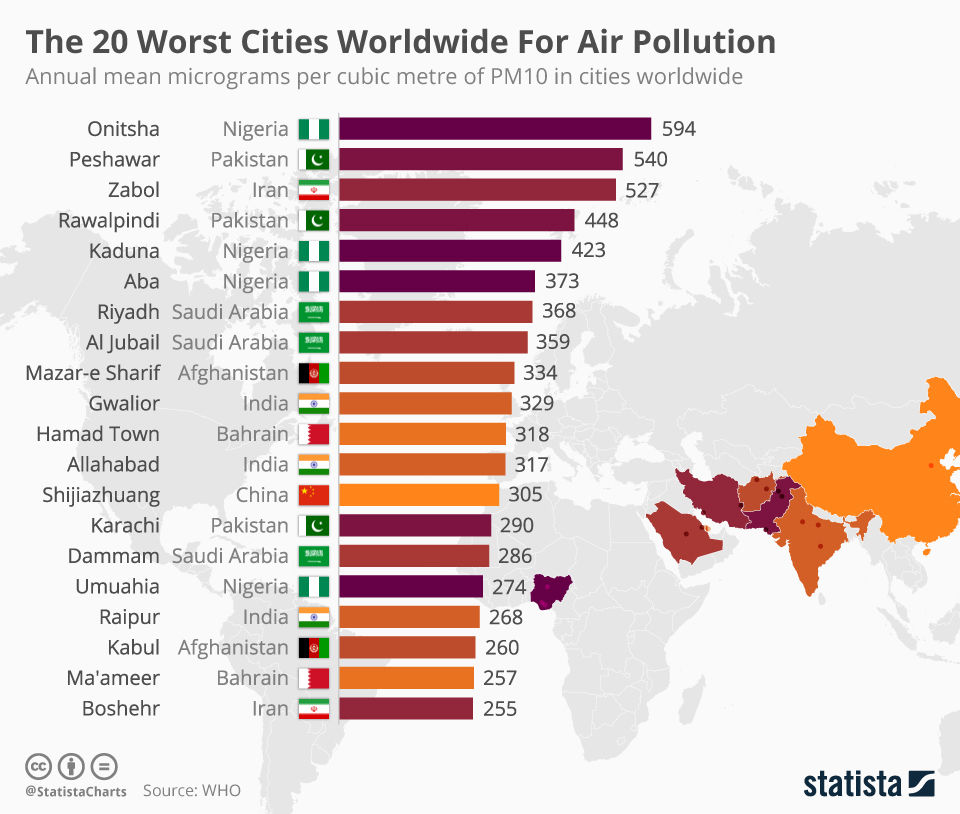Create Your First Project
Start adding your projects to your portfolio. Click on "Manage Projects" to get started
Air Contamination: Global Perspectives on Pollutant Trace Gases
Project Type
Photography
Date
June 2016 to June 2018
Description
The impacts of pollutant trace gases are multifaceted and multifarious. These gases play a significant role in the formation of air pollution, smog, and haze, contributing to respiratory illnesses, cardiovascular diseases, and premature mortality among exposed populations. Moreover, pollutant trace gases serve as precursors to the formation of secondary pollutants, such as fine particulate matter (PM2.5) and ground-level ozone, further exacerbating air quality concerns.
In addition to their adverse effects on human health, pollutant trace gases also influence climate dynamics and environmental systems. For instance, methane, a potent greenhouse gas, contributes to global warming and climate change by trapping heat in the atmosphere. Similarly, nitrogen oxides (NOx) and sulfur dioxide (SO2) can lead to acid rain formation, soil acidification, and ecosystem damage, impacting biodiversity and ecosystem services.
Addressing air contamination from pollutant trace gases requires concerted action at local, national, and international levels. Governments, regulatory agencies, industry stakeholders, and environmental organizations are implementing a range of strategies to mitigate emissions, improve air quality, and protect public health and the environment. These strategies encompass measures such as emissions controls, fuel standards, vehicle regulations, renewable energy adoption, and urban planning initiatives aimed at reducing pollution hotspots.
Furthermore, advancements in monitoring technologies, satellite observations, and atmospheric modeling are enhancing our understanding of pollutant trace gases' spatial distribution, temporal variability, and atmospheric interactions. These tools enable policymakers to develop evidence-based policies, target emission reduction efforts, and assess the effectiveness of air quality management strategies.
In conclusion, addressing air contamination from pollutant trace gases is a global imperative that requires coordinated action, innovation, and commitment from all stakeholders. By adopting holistic approaches to air quality management, investing in cleaner technologies, and promoting sustainable development practices, we can mitigate the adverse impacts of pollutant trace gases, safeguard human health, and preserve the integrity of our planet's atmosphere for future generations.
Air contamination due to pollutant trace gases presents a pervasive environmental challenge with profound implications for human health, climate change, and ecosystem integrity. This description offers insights into the widespread presence of pollutant trace gases in the atmosphere, their sources, impacts, and the global efforts underway to address this critical issue.
Pollutant trace gases, including carbon monoxide (CO), sulfur dioxide (SO2), nitrogen dioxide (NO2), ozone (O3), methane (CH4), and volatile organic compounds (VOCs), are emitted from a variety of anthropogenic and natural sources. Industrial activities, transportation, agriculture, fossil fuel combustion, biomass burning, and natural processes such as volcanic eruptions and biogenic emissions contribute to the release of these gases into the atmosphere.
Once emitted, pollutant trace gases undergo complex atmospheric processes, including dispersion, transformation, and deposition, leading to their widespread distribution and persistence in the atmosphere. These gases can travel over long distances, crossing international borders and affecting air quality and climate patterns on regional and global scales.



















